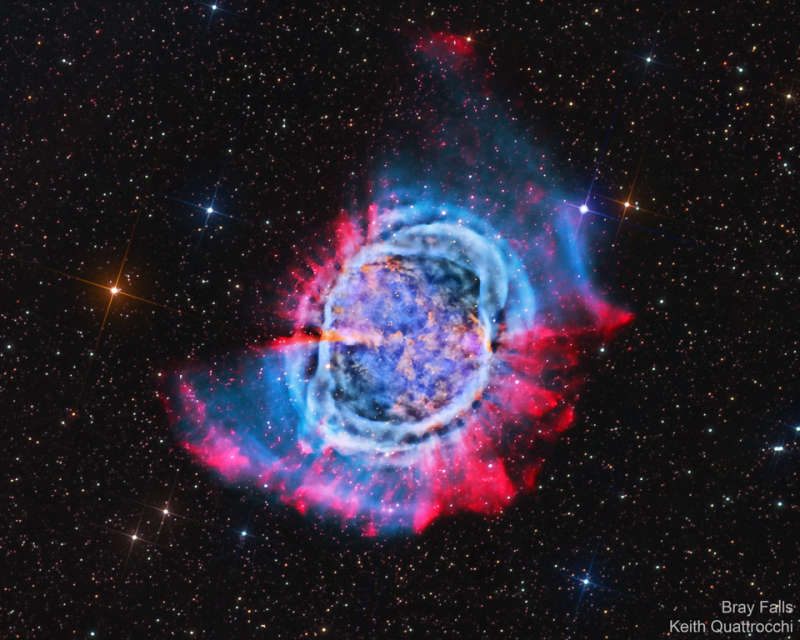
|
Credit & Copyright: Bray Falls &
Keith Quattrocchi
Explanation:
What will become of our Sun?
The first hint of our
Sun's future
was discovered inadvertently in
1764.
At that time,
Charles Messier was compiling a list
of diffuse objects not to be confused with comets.
The 27th object on
Messier's list, now known as
M27 or the Dumbbell Nebula, is a
planetary nebula,
one of the brightest
planetary nebulae on the sky -- and visible
toward the constellation of the Fox (Vulpecula) with binoculars.
It takes light about 1000 years to reach us from M27,
featured here in colors emitted by
hydrogen and
oxygen.
We now know that in about 6 billion years,
our Sun will
shed its outer gases into a
planetary nebula like M27,
while its remaining center will become an
X-ray hot
white dwarf star.
Understanding the physics and significance of
M27
was well beyond 18th century science, though.
Even today, many things
remain mysterious about
planetary nebulas, including how their
intricate
shapes are created.
|
January February March April May June July August September October November December |
| ||||||||||||||||||||||||||||||||||||||||||||||||
NASA Web Site Statements, Warnings, and Disclaimers
NASA Official: Jay Norris. Specific rights apply.
A service of: LHEA at NASA / GSFC
& Michigan Tech. U.
Based on Astronomy Picture
Of the Day
Publications with keywords: M 27 - dumbbell nebula
Publications with words: M 27 - dumbbell nebula
See also:
